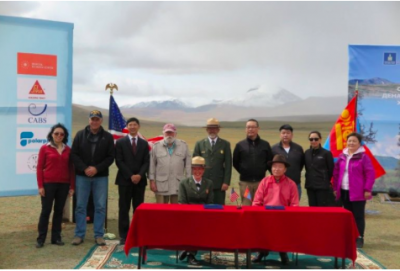To provide observations and information on the emerging fields of landscape scale conservation, heritage preservation, and sustainable community development.
Newsletter
Stay up-to-date with the latest nature, culture and community news.
We won’t spam you or share your information. Newsletters are sent approximately 10 times a year. Unsubscribe at any time.
Predictions for the Coming Year
Behind the Scenes of the Legislative Process

Vietnam: Looking for the American War
In Vietnam, our tour guide told us, they call winter the American Season. This is when well-heeled baby boomers come to see a country that figured so large in much of their youth. Some also come to see what has happened to country that they last saw under battle field conditions. What they find is a “communist” country in the throes of entrepreneurial high spirts. Not a wealthy country by any means, but with a GDP growth rate of over 7%. The streets of the cities are lined with small shops and choked with motor scooters. But what of the war, what remains of the landscape of past conflict? Read more about that here.

Interpreting and Representing Slavery
Scholars from four continents gathered in the World Heritage listed Rotunda at the University of Virginia in Charlottesville for a two-day conference on “Interpreting and Representing Slavery and its Legacies in Museums and Sites: International Perspectives” (March 19-20 2018). The conference explored the variety of ways universities, historic sites and museums from around the Atlantic World tell the story of slavery and its far reaching legacy. The conference was sponsored by Thomas Jefferson’s Monticello, the University of Virginia, and the United States Committee of the International Council on Monuments and Sites (US/ICOMOS) in collaboration with the United National Educational, Scientific, and Cultural Organization (UNESCO) Slave Route Project: Resistance, Liberty, and Heritage.

Reimagining the History of the (Inter)National Park Service
The National Park Service has a long history of international engagement with ties to other nations, including Canada, dating to the agency’s earliest years. In 1961, during the height of the Cold War, an official Division of International Affairs was created, to advance the aims of conservation and U.S. diplomatic and political pursuits. Learn more about NPS international activities and the significance of the agency’s global ties in this piece by guest observer Joana Arruda.

Behind the Scenes of the Legislative Process
For this month’s Featured Voice interview, we talk with Don Hellmann, the former Assistant Director for Legislative and Congressional Affairs for the National Park Service. Hellmann ended his 40-year career working with Congress at the beginning of 2017. He spent the last 22 years with the NPS. In the interview, Hellmann provides insight into how the NPS legislative agenda changed over time as well as background on especially memorable bills, including Public Law 104-333, which addressed the future of the Presidio of San Francisco.

Places and People in Trouble
Can America’s small cities be saved? Practioners in the fields of historic preservation, parks and recreation, and community development across the country have tried to tackle this problem. The problem runs wide and deep. For example, in Pennsylvania over 30 municipalities, almost all of which could be characterized as small cities, have been designated financially distressed. All of these places have a similar litany of problems – declining population and tax revenue, high pension and health care costs, a large inventory of blighted or tax-exempt properties, and heavy burden of municipal debt. Recent opinion pieces in the New York Times and the Washington Post have highlighted the issue, now what? Read more.

Vietnam: Looking for the American War
In Vietnam, our tour guide told us, they call winter the American Season. This is when well-heeled baby boomers come to see a country that figured so large in much of their youth. Some also come to see what has happened to country that they last saw under battle field conditions. What they find is a “communist” country in the throes of entrepreneurial high spirts. Not a wealthy country by any means, but with a GDP growth rate of over 7%. The streets of the cities are lined with small shops and choked with motor scooters. But what of the war, what remains of the landscape of past conflict? Read more about that here.

Interpreting and Representing Slavery
Scholars from four continents gathered in the World Heritage listed Rotunda at the University of Virginia in Charlottesville for a two-day conference on “Interpreting and Representing Slavery and its Legacies in Museums and Sites: International Perspectives” (March 19-20 2018). The conference explored the variety of ways universities, historic sites and museums from around the Atlantic World tell the story of slavery and its far reaching legacy. The conference was sponsored by Thomas Jefferson’s Monticello, the University of Virginia, and the United States Committee of the International Council on Monuments and Sites (US/ICOMOS) in collaboration with the United National Educational, Scientific, and Cultural Organization (UNESCO) Slave Route Project: Resistance, Liberty, and Heritage.

Reimagining the History of the (Inter)National Park Service
The National Park Service has a long history of international engagement with ties to other nations, including Canada, dating to the agency’s earliest years. In 1961, during the height of the Cold War, an official Division of International Affairs was created, to advance the aims of conservation and U.S. diplomatic and political pursuits. Learn more about NPS international activities and the significance of the agency’s global ties in this piece by guest observer Joana Arruda.

Behind the Scenes of the Legislative Process
For this month’s Featured Voice interview, we talk with Don Hellmann, the former Assistant Director for Legislative and Congressional Affairs for the National Park Service. Hellmann ended his 40-year career working with Congress at the beginning of 2017. He spent the last 22 years with the NPS. In the interview, Hellmann provides insight into how the NPS legislative agenda changed over time as well as background on especially memorable bills, including Public Law 104-333, which addressed the future of the Presidio of San Francisco.

Places and People in Trouble
Can America’s small cities be saved? Practioners in the fields of historic preservation, parks and recreation, and community development across the country have tried to tackle this problem. The problem runs wide and deep. For example, in Pennsylvania over 30 municipalities, almost all of which could be characterized as small cities, have been designated financially distressed. All of these places have a similar litany of problems – declining population and tax revenue, high pension and health care costs, a large inventory of blighted or tax-exempt properties, and heavy burden of municipal debt. Recent opinion pieces in the New York Times and the Washington Post have highlighted the issue, now what? Read more.


